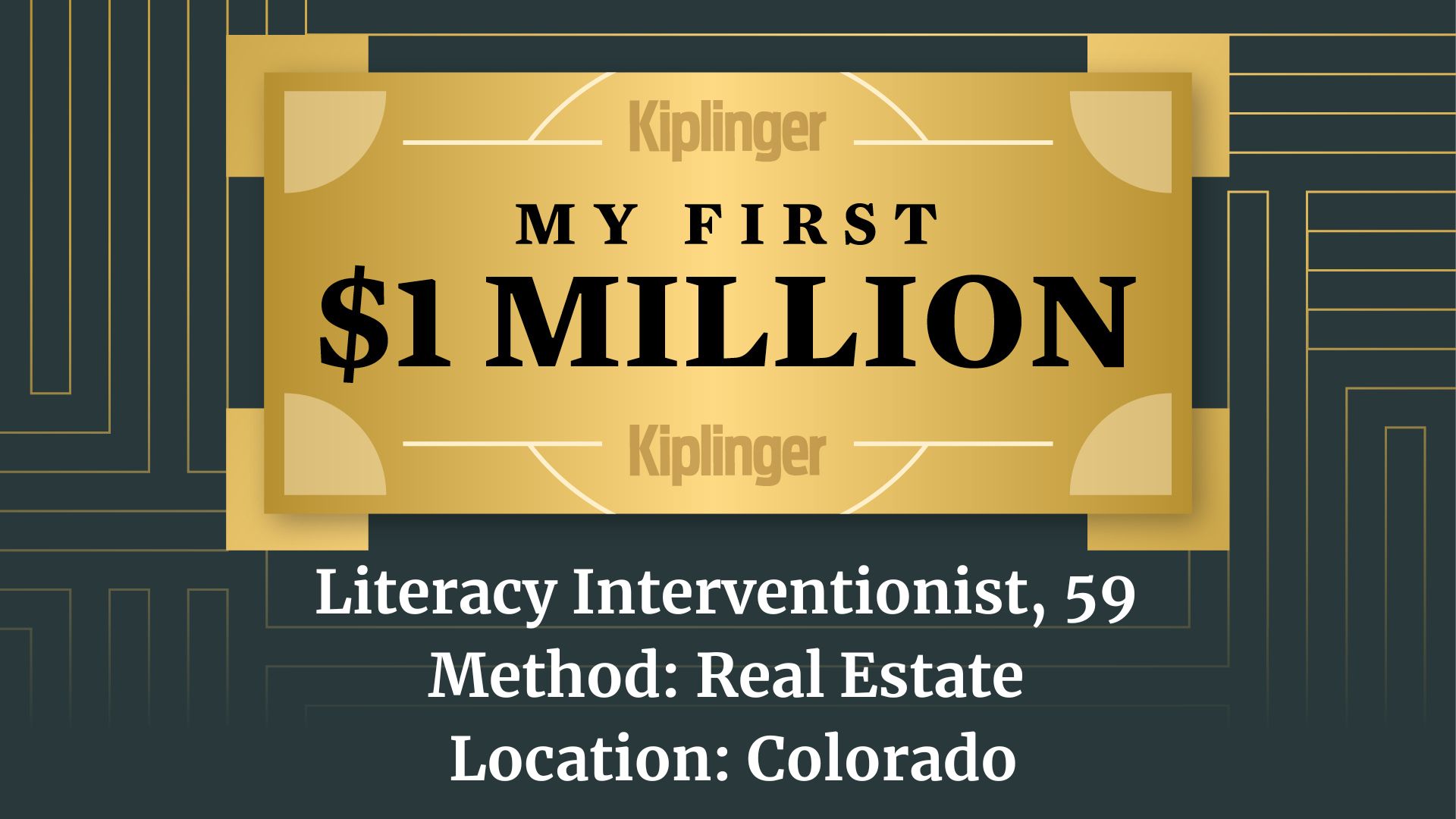How to Find the Best Retirement Community for You
A retirement community can be a great option as you age. Here's how to find the right one for you.


Erin Bendig
When trying to decide on the best place to retire, many older adults decide that a retirement community will be their next move. However, retirement communities can vary significantly in terms of their housing options, amenities, healthcare services and the lifestyle that they offer.
Not to mention, some retirement communities are specifically for niche groups of people, while others may not be in the right location, like if you want to retire to a cold locale.
There's a lot to consider, so here are seven steps to find the right retirement community for you.

Sign up for Kiplinger’s Free E-Newsletters
Profit and prosper with the best of expert advice on investing, taxes, retirement, personal finance and more - straight to your e-mail.
Profit and prosper with the best of expert advice - straight to your e-mail.
1. Choose a location for the retirement community search
Step one is to figure out where you want to live. Consider your motivation for moving.
Are you looking to be closer to family? (That’s the main reason baby boomers purchased a new home in 2024, according to the National Association of Realtors’ annual Home Buyers and Sellers Generational Trends report). In 2024, the main reason by all generations was simply wanting to own their own home (29%). Are you looking for an area with more affordable housing? Do you want to live in a bustling city or a quiet suburb? Does your ideal retirement entail living near the beach?
When deciding where to retire, you'll need to weigh several factors, including the area's cost of living, access to quality healthcare, sense of community and climate. Once you have answers to questions like those, you can move on.
2. Set a budget
Establishing how much you’d like to spend on housing is crucial. Your budget should include not only your monthly housing costs but also HOA costs and entrance fees — many retirement communities charge them, according to the National Investment Center for Seniors Housing & Care (NIC), with entry fees ranging widely, from $40,000 to more than $2 million. The cost of a retirement community can also vary, but according to A Place for Mom, the average monthly cost of a senior apartment is $1,400, while the average cost of a home in a 55+ community ranges from about $1,500 to as high as $4,000, according to 55 Places.
Once you’ve determined what you can afford, you can zero in on the retirement communities that fit your budget.
3. Decide whether you want to buy or rent
Some retirement communities offer only rental properties, some offer only homes for sale and some offer both. Consider whether you want to put down roots or have the flexibility of renting, keeping in mind that it may make sense to rent in retirement for both financial reasons and convenience. Besides, it's easy to be dazzled by the amenities like swimming pools and golf courses.
If you intend to purchase rather than rent, then consider what the retirement community property market is like and weigh all of the angles of a pricey financial commitment.
4. Consider what level of care you’re looking for
Retirement communities offer different levels of healthcare, from independent living communities to assisted living, to communities that specialize in memory care. Some offer several options for care, with different association dues depending on the level of assistance you select.
If you are uncertain how much care you may need, then a Continuing Care Retirement Community (CCRC) may be for you. These settings make it easier for retirees to shift from independent living to higher levels of care as they age. These CCRCs can be especially helpful for couples in which one spouse needs much more medical care than the other but they want to remain close.
5. Look at a community’s amenities and services
Retirement communities offer a wide range of on-site amenities and services, such as beauty salons, libraries, gyms, swimming pools, lakes, pickleball and tennis courts and transportation to nearby shopping centers and grocery stores.
The trend of niche retirement communities is growing, so if one community doesn't feel right, consider one with a different culture or focus. For retirees who want to stay intellectually active, there are communities linked to universities, for example. Other communities focus on wellness or spirituality, and there's even a Jimmy Buffett-themed retirement community. Some offer horseback riding, chicken coops, and media lounges where residents can record and produce podcasts. What lifestyle and culture do you want in a retirement community?
Pro tip: Don’t overlook the value of access to gardens and parks — studies show older adults living in neighborhoods with more green spaces live longer and have a lower risk of cardiovascular disease, slower cognitive decline, lower cancer rates, and better overall health.
6. Research the facility’s reputation
Do your homework by seeing whether a retirement community has received complaints through the Better Business Bureau and reading online reviews. Moreover, U.S. News & World Report offers a database of the best retirement communities in 2024 based on survey data from over 400,000 residents and their family members at about 3,500 senior living communities nationwide. Caring.com also compiles ratings and reviews of 55-plus communities, providing a search tool that lets you filter by city, state, or zip code. Finally, Medicare offers a database, also with ratings, of nursing homes with rehab services.
While these search tools are helpful, they don't include every retirement community. Some excellent retirement communities or nursing homes, particularly those that are non-profit, are not included in the ratings. And you should never trust ratings alone. Always talk to current residents and poll your friends and family for the best locations.
To get a sense of the community's financial health, review the occupancy rate, financial statements and audit report. For non-profit communities, ask to see the IRS Form 990.
7. Tour retirement communities in person
Once you’ve narrowed your options to a few communities, touring them in person can give you a better feel for what it’s like to live there. Talk to residents about their experiences, pay attention to how staff and residents interact, don’t be afraid to ask questions and stay for dinner so you can sample the food.
If you're investigating a continuing care community, find out the staff-to-resident ratio and what kind of nurses are in-house. Bring along the Medicare checklist of questions to ask when you're touring a nursing home.
The bottom line on finding the right retirement community
Selecting the best retirement community for you depends on a variety of factors, most notably your budget, lifestyle preferences and what kind of healthcare you’re looking for. Keep in mind that where you want to live in retirement could change as you get older and experience changes in your health, finances or desired lifestyle.
Related Content
Get Kiplinger Today newsletter — free
Profit and prosper with the best of Kiplinger's advice on investing, taxes, retirement, personal finance and much more. Delivered daily. Enter your email in the box and click Sign Me Up.

Daniel Bortz is a freelance writer based in Arlington, Va. His work has been published by The New York Times, The Washington Post, Consumer Reports, Newsweek, and Money magazine, among others.
- Erin BendigPersonal Finance Writer
-
 Two Don'ts and Four Dos During Trump's Trade War
Two Don'ts and Four Dos During Trump's Trade WarThe financial rules have changed now that tariffs have disrupted the markets and created economic uncertainty. What can you do? (And what shouldn't you do?)
By Maggie Kulyk, CRPC®, CSRIC™
-
 I'm Single, With No Kids: Why Do I Need an Estate Plan?
I'm Single, With No Kids: Why Do I Need an Estate Plan?Unless you have a plan in place, guess who might be making all the decisions about your prized possessions, or even your health care: a court.
By Cynthia Pruemm, Investment Adviser Representative
-
 Two Don'ts and Four Dos During Trump's Trade War
Two Don'ts and Four Dos During Trump's Trade WarThe financial rules have changed now that tariffs have disrupted the markets and created economic uncertainty. What can you do? (And what shouldn't you do?)
By Maggie Kulyk, CRPC®, CSRIC™
-
 I'm Single, With No Kids: Why Do I Need an Estate Plan?
I'm Single, With No Kids: Why Do I Need an Estate Plan?Unless you have a plan in place, guess who might be making all the decisions about your prized possessions, or even your health care: a court.
By Cynthia Pruemm, Investment Adviser Representative
-
 Most Investors Aren't as Diversified as They Think: Are You?
Most Investors Aren't as Diversified as They Think: Are You?You could be facing a surprisingly dangerous amount of concentration risk without realizing it. Fixing that problem starts with knowing exactly what you own.
By Scott Noble, CPA/PFS
-
 Fired Up By the Masters and RBC Heritage? See These Homes for Sale By Golf Courses
Fired Up By the Masters and RBC Heritage? See These Homes for Sale By Golf CoursesFive homes for sale near golf courses, for people who can't get enough of the tour.
By Alexandra Svokos
-
 Retire in Malta for Quiet Coastal Perfection
Retire in Malta for Quiet Coastal PerfectionSeemingly remote yet easily accessible to other points in Europe, sunny Malta offers paths to citizenship and residency for families and retirees.
By Drew Limsky
-
 My First $1 Million: Literacy Interventionist, 59, Colorado
My First $1 Million: Literacy Interventionist, 59, ColoradoEver wonder how someone who's made a million dollars or more did it? Kiplinger's new My First $1 Million series uncovers the answers.
By Joyce Lamb
-
 Will My Children Inherit Too Much?
Will My Children Inherit Too Much?If you worry about how your children will handle an inheritance, you're not alone. Luckily, you have options — from lifetime gifting to trusts — that can help.
By Mallon FitzPatrick, CFP®, AEP®, CLU®
-
 Charitable Giving Lessons From Netflix's 'Apple Cider Vinegar'
Charitable Giving Lessons From Netflix's 'Apple Cider Vinegar'Charity fraud is rife, and a Netflix series provides a timely warning about donating money to a good cause without looking into its background.
By Peter J. Klein, CFA®, CAP®, CSRIC®, CRPS®